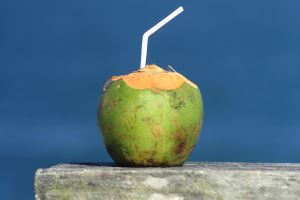From Leaf To Cup
Tea, one of the world’s oldest and most cherished beverages, has been woven into the fabric of countless cultures and traditions. This simple yet profound hot drink, derived from the Camellia sinensis plant, has a rich history of over 5,000 years.
Next you will explore the fascinating world of tea, diving into its history, varieties, health benefits, preparation methods, and its role in modern culture.
Part 1: Historical Roots and Global Spread
Tea's journey began in China, where legend has it that Shen Nong (Divine Farmer) discovered it around 2737 BCE when leaves from a wild tree blew into his pot of boiling water. Throughout the centuries, tea became an integral part of Chinese culture, eventually spreading to Japan, Korea, and other parts of Asia. The introduction of tea to Europe in the 16th century marked a significant turning point. Portuguese and Dutch traders brought tea to Western Europe, where it quickly gained popularity among the elite. By the mid-17th century, tea had become a fashionable beverage in England, leading to the establishment of tea gardens and the tradition of afternoon tea.
Part 2: Diverse Varieties of Tea
Tea comes in a myriad of varieties, each with its unique flavour profile, aroma, and characteristics. The primary types of tea include:
Green Tea: Known for its fresh, grassy flavour and light body, green tea undergoes minimal oxidation. It is rich in antioxidants and is often associated with various health benefits, including weight loss and improved brain function.
Black Tea: Fully oxidized, black tea has a stronger flavour and a darker colour. It is the most commonly consumed tea worldwide and includes popular varieties such as Darjeeling, Assam, and Ceylon.
Oolong Tea: Semi-oxidized, oolong tea falls between green and black tea in terms of flavour and oxidation level. It is known for its complex taste, which can range from floral to fruity to woody.
White Tea: The least processed of all teas, white tea is made from young leaves and buds. It has a delicate, subtle flavour and is often prized for its high levels of antioxidants.
Herbal Tea: Technically not a true tea, as it does not come from the Camellia sinensis plant, herbal teas are infusions made from herbs, flowers, fruits, and spices. Popular examples include chamomile, peppermint, and rooibos.
Part 3: Health Benefits of Tea
Tea is celebrated not only for its taste but also for its numerous health benefits. Different types of tea contain a variety of bioactive compounds that contribute to overall wellness.
Tea, especially green and white varieties, is rich in antioxidants known as catechins. These compounds help combat oxidative stress in the body, reducing the risk of chronic diseases such as heart disease and cancer. Certain teas, particularly green tea, have been shown to boost metabolism and increase fat burning, making them popular aids in weight management. Regular consumption of tea, particularly black and green tea, has been linked to improved cardiovascular health. The flavonoids in tea help lower blood pressure, reduce LDL cholesterol levels and improve blood vessel function.
Part 4: Mastering the Art of Tea Brewing
Preparing the perfect cup of tea is both an art and a science. Different teas require specific brewing techniques to bring out their best flavours and aromas.
Water Quality: Always use fresh, filtered water. The quality of water significantly affects the taste of the tea.
Temperature: Different teas require different water temperatures. Green and white teas are best brewed at lower temperatures (160-185°F or 70-85°C), while black and oolong teas benefit from higher temperatures (190-212°F or 90-100°C).
Steeping Time: Over-steeping can lead to bitterness while under-steeping can result in a weak brew. Follow recommended steeping times: 2-3 minutes for green and white teas, 3-5 minutes for black teas, and 4-7 minutes for oolong teas.
Teaware: Using the right teaware can enhance your tea experience. Porcelain or glass teapots are ideal for delicate green and white teas, while clay teapots are traditionally used for oolong and pu-erh teas.
Tea, with its rich history, diverse varieties, health benefits, and cultural significance, is truly a timeless elixir. Whether you are a seasoned tea connoisseur or a curious newcomer, exploring the world of tea can be a rewarding journey.


